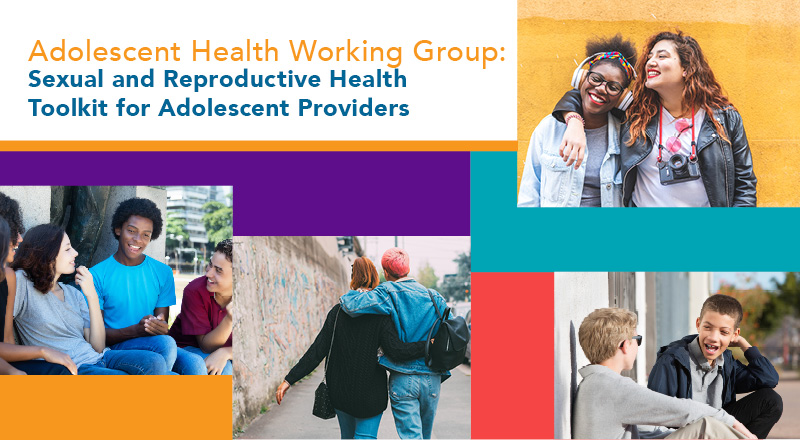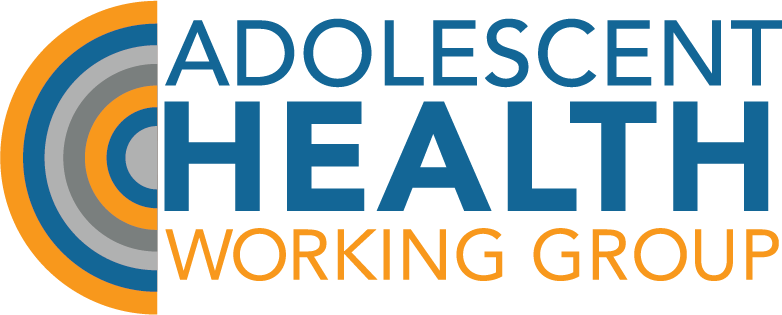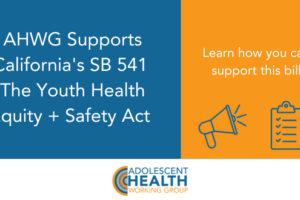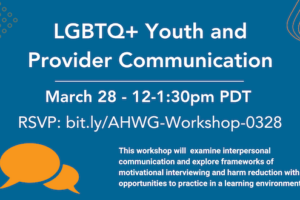
When Health Comes Under Attack
Late last year, we released an updated version of AHWG’s Sexual and Reproductive Health Toolkit for Adolescent Providers. The 122-page resource continues to champion a paradigm shift from a risk-based perspective to one that understands adolescent sexuality as a normative stage of development.
The Toolkit was designed for healthcare providers but is applicable to others, including school-based and youth program providers. This resource is not intended to replace clinical practice protocols; AHWG encourages providers to always follow current standards of care. However, it does provide evidence-based practice guidelines to enhance a provider’s ability to meet the health needs of adolescents.
 Over the years, a variation of a doctored image (shown on the right) from the Toolkit has been circulating on social media. Many of these images have been cropped or altered with additional imagery, and commenters have added their own language or explanation to the graphics; little to no context is given about the intended use of the resource.
Over the years, a variation of a doctored image (shown on the right) from the Toolkit has been circulating on social media. Many of these images have been cropped or altered with additional imagery, and commenters have added their own language or explanation to the graphics; little to no context is given about the intended use of the resource.
We want to share a few notes that may help dispel myths about the Sexual and Reproductive Health Toolkit for Adolescent Providers.
1. AHWG has been an advocate of adolescent health for 25 years. Our advocacy has covered many topics and policies related to minor consent and confidentiality, substance use and harm reduction strategies, guiding providers and parents/caregivers to understand mental health topics better, and promoting health care practices that are inclusive of LGBTQ+ youth.
2. AHWG has worked with a broad range of providers, parents/caregivers, and youth to create evidence-based toolkits to increase the capacity of adolescent health providers. Our Toolkit was published in 2021 (prior versions were released in 2010 and 2003).
The Sexual and Reproductive Health Toolkit is a part of our Adolescent Provider Toolkit series. Our website specifically mentions, “Note that our resources for providers are not meant for direct youth consumption. However, these do contain resources for providers to facilitate conversations with youth and their parents/caregivers.”
AHWG works with providers who provide services for young people ages 11 to 24. Therefore, the content varies in age range and focus. The resources are suitable for providers to hold conversations with their patients/clients who range from middle-school to “transitional-age youth” who are people ages 18 to 25.
3. The doctored images that circulate online are related to sex toys. The Toolkit does include a page about how to use sex toys safely.
Some young people experiment with or use sex toys. They are a way that people explore sexual pleasure and can be used individually or with partners. Healthcare providers field questions from patients about sex toys. It is important that people who are using or experimenting with sex toys do so safely and minimize any chance of infection.
4. As doctored images circulate online, we receive emails that accuse AHWG of encouraging dangerous and unsafe practices for children. When reviewing the Toolkit and our 25 years of work, you’ll see that is not the case.
When confronted with fear and ignorance, we must all do our part to remain vigilant with truth and facts. When confusion and misinformation spread, vulnerable communities are often left behind.
Our resources remain medically and community-informed. We hope that this blog post provides clarity and context. We value our relationships with educators, primary care providers, therapists, social workers, and counselors. This document was updated in 2021 due to hundreds of hours donated by medical professionals, mental health professions, community health educators, parents, youth, community partners, and donations from supporters.
We created and continue to update our resources because research shows that a more informed youth leads to a healthier and happier adult.



